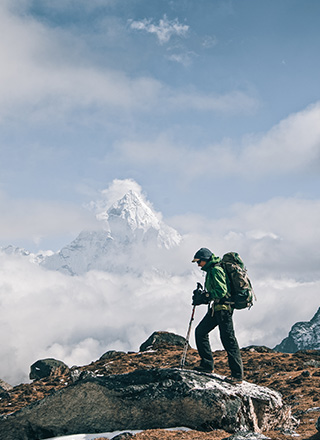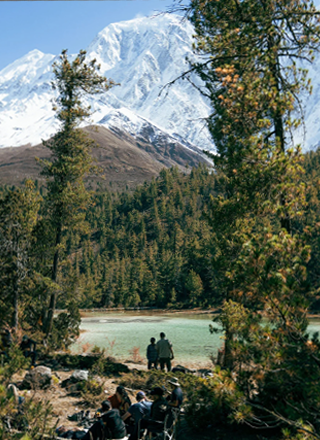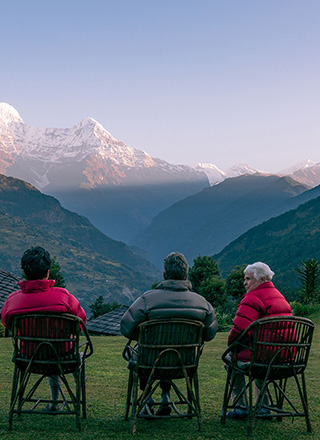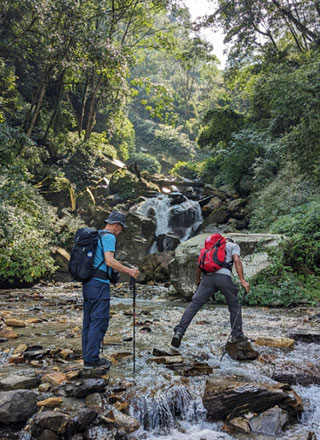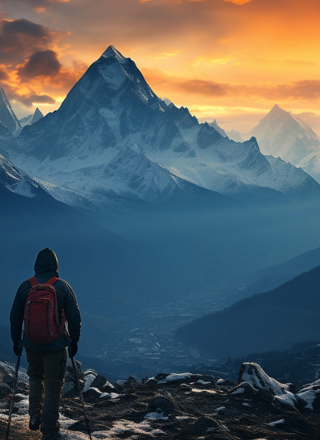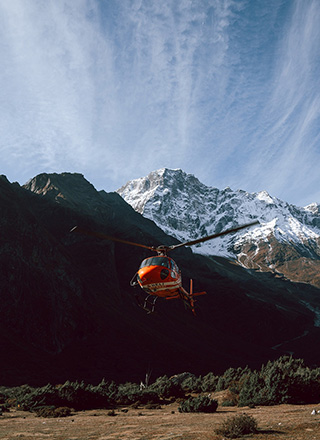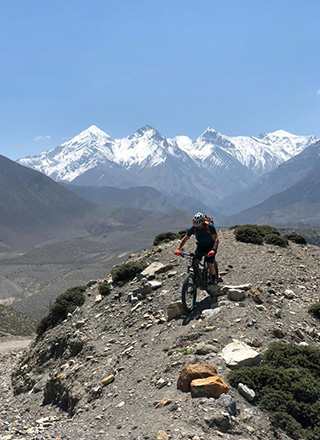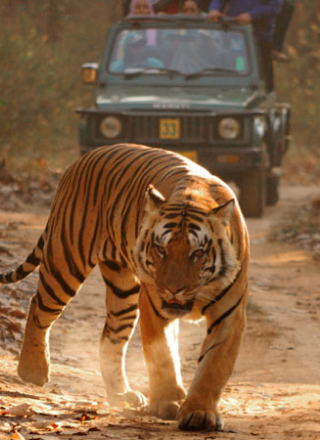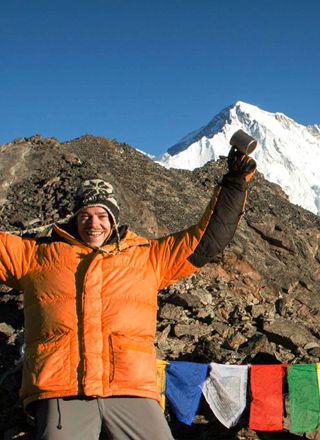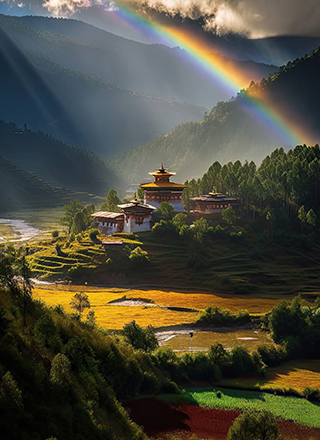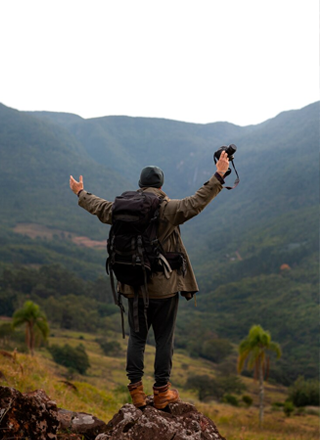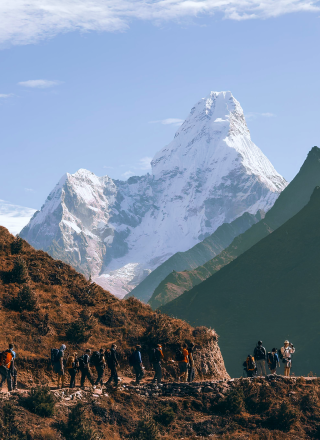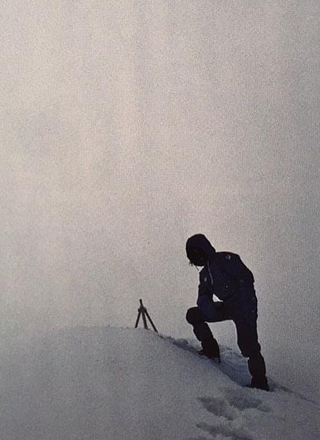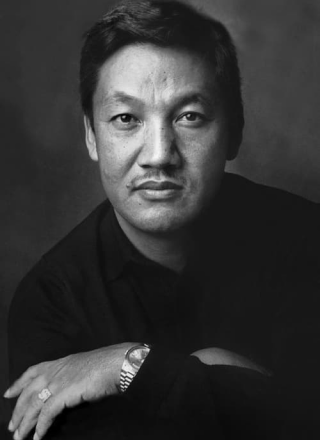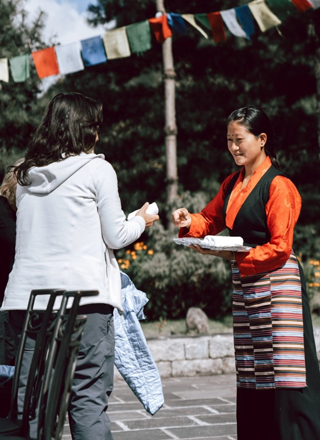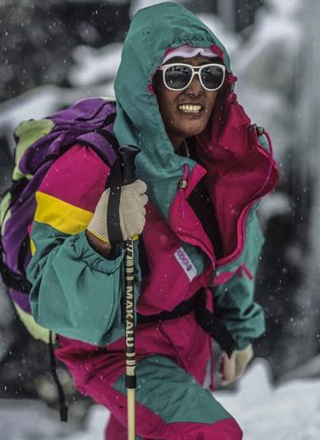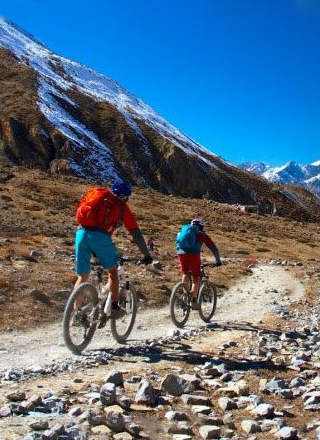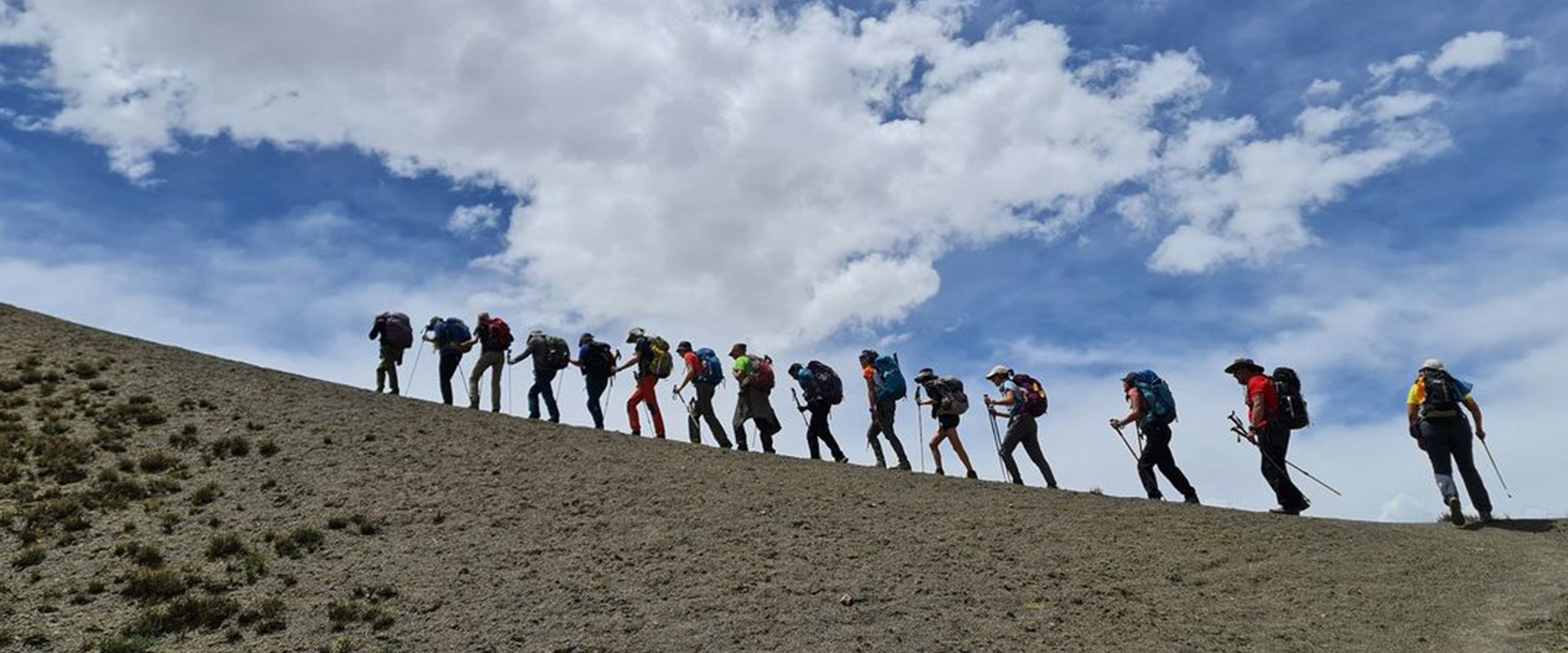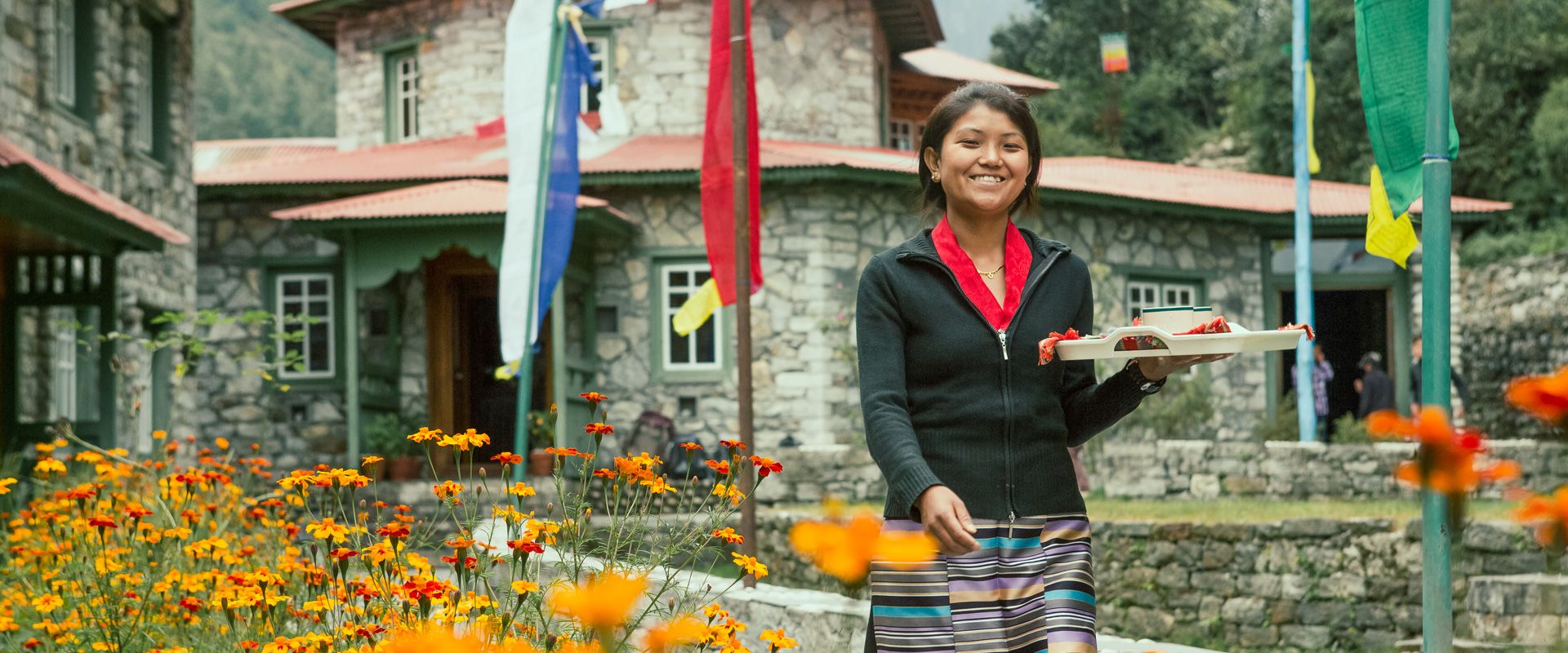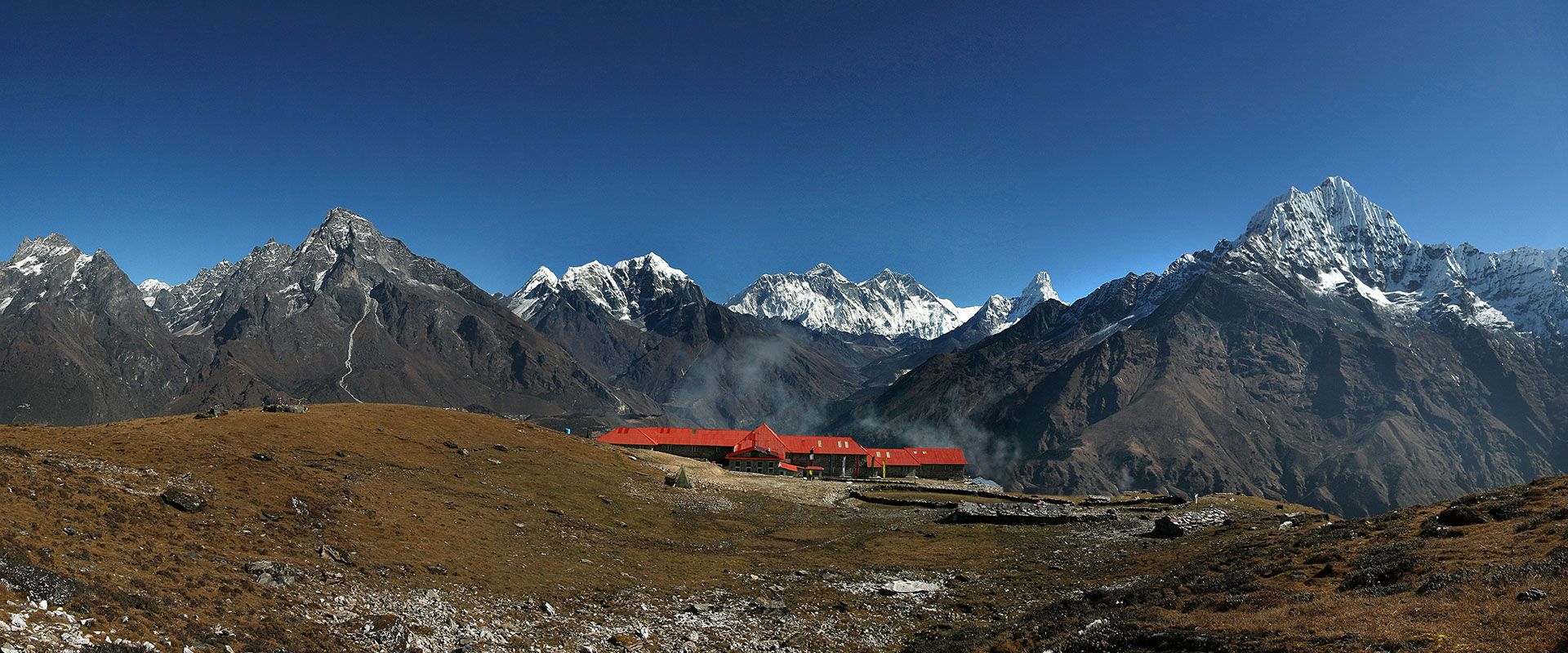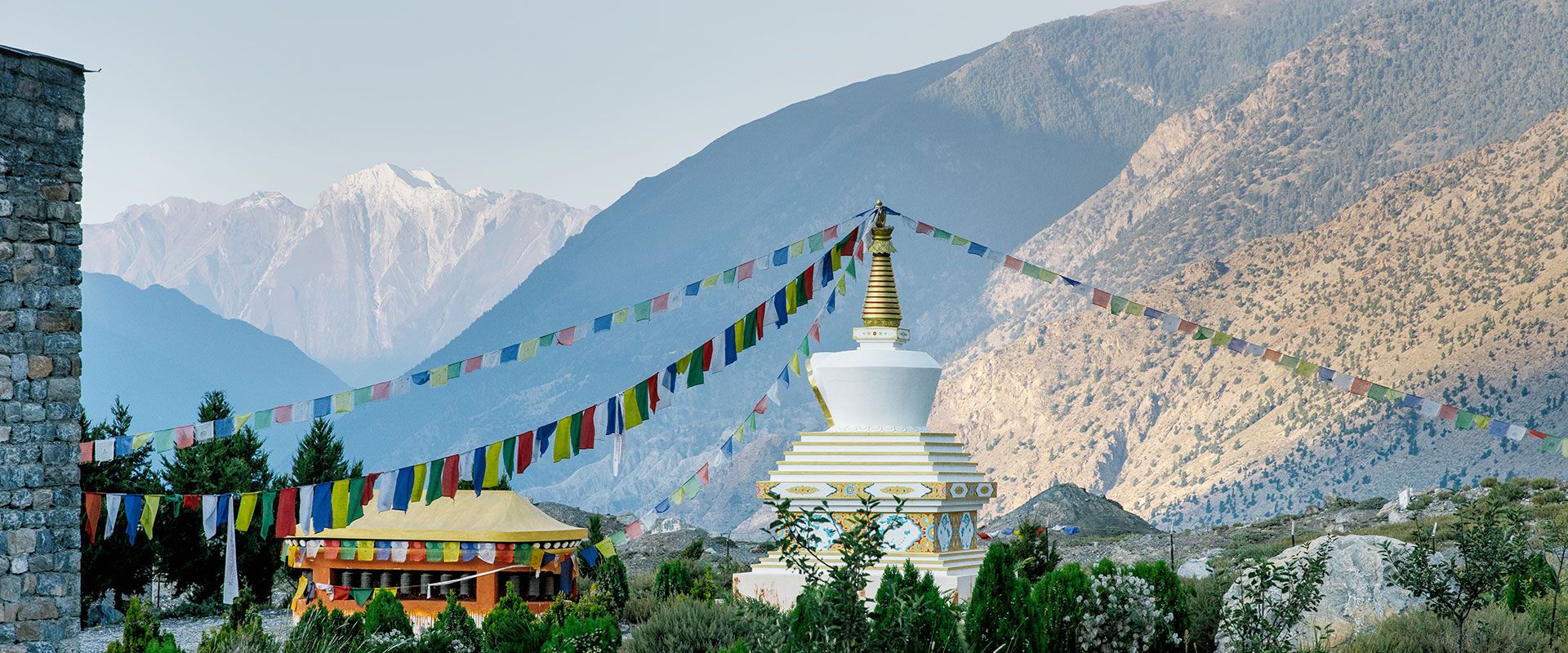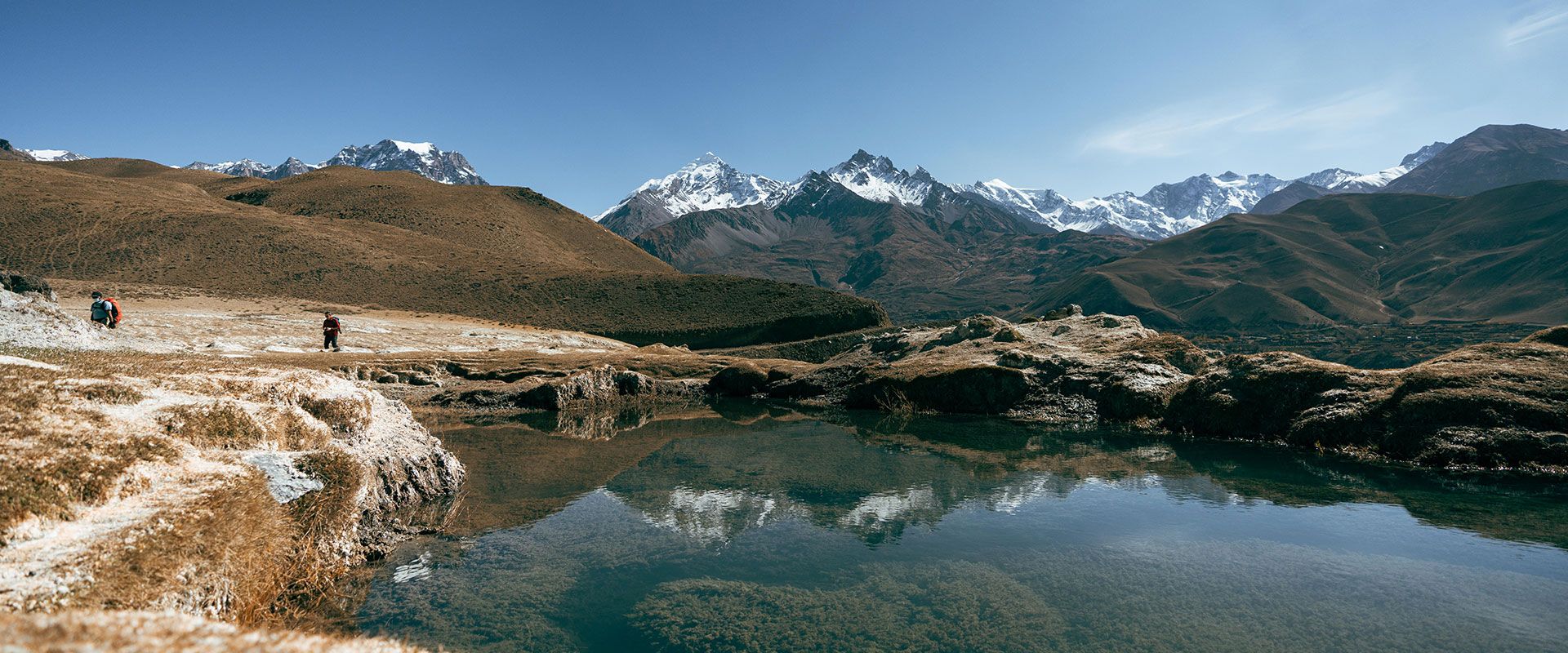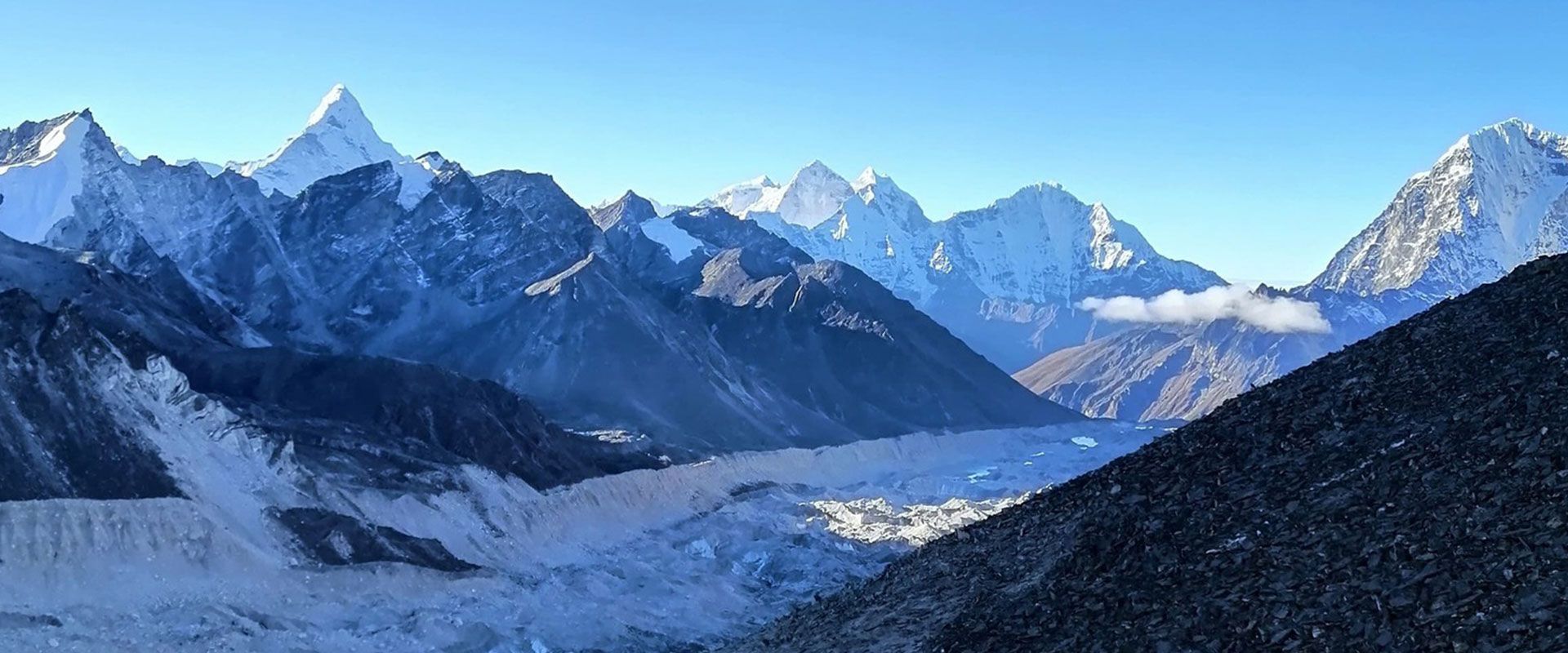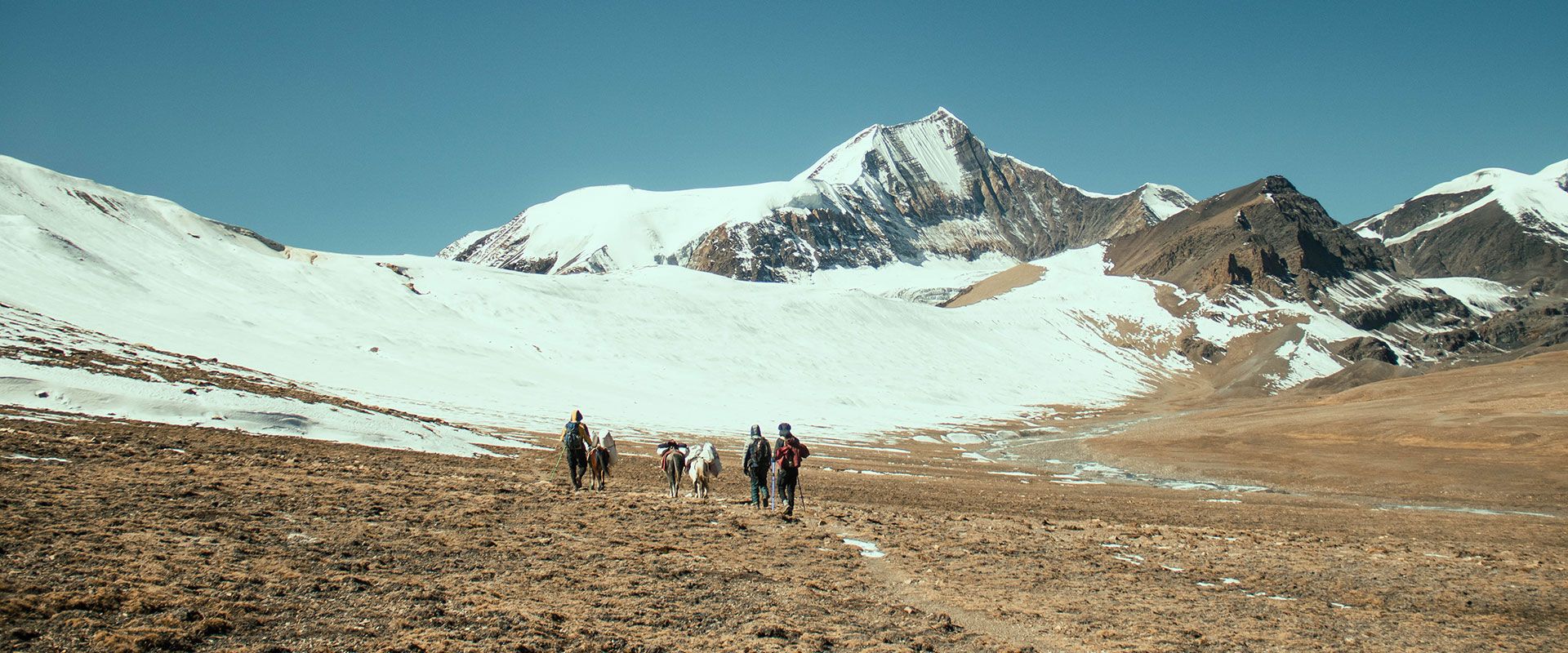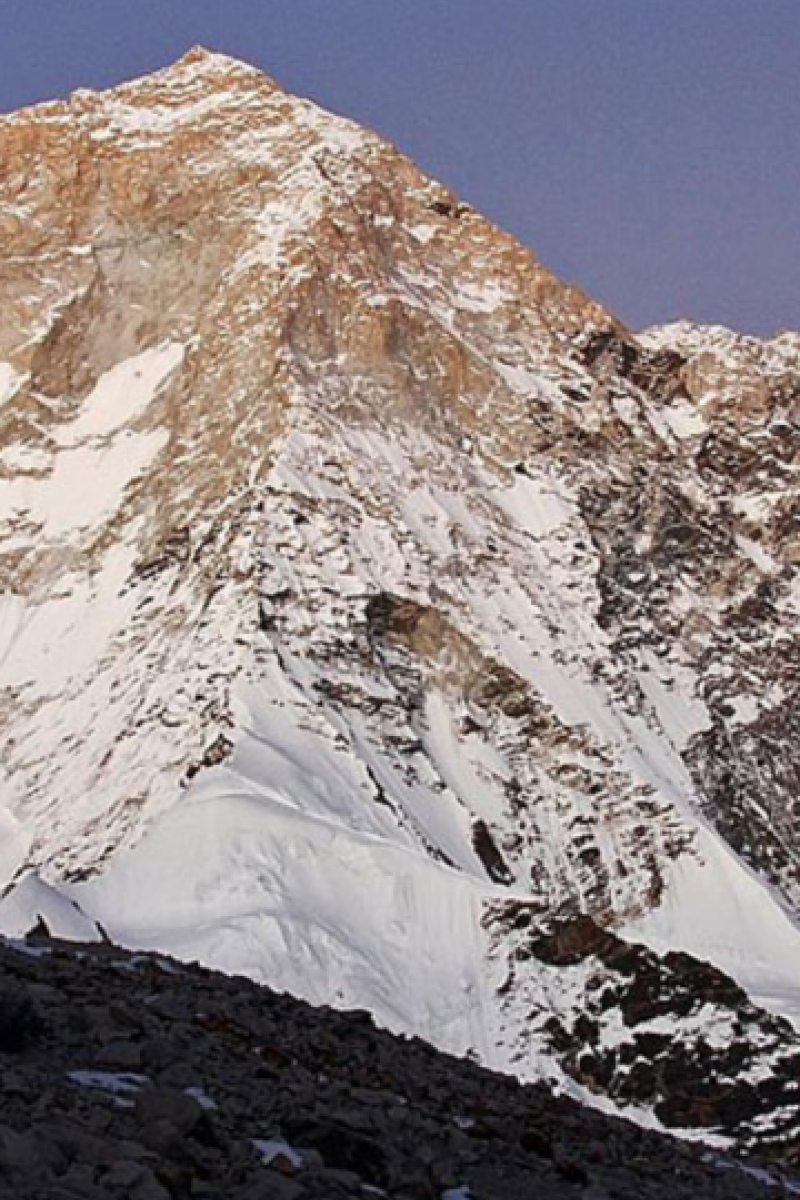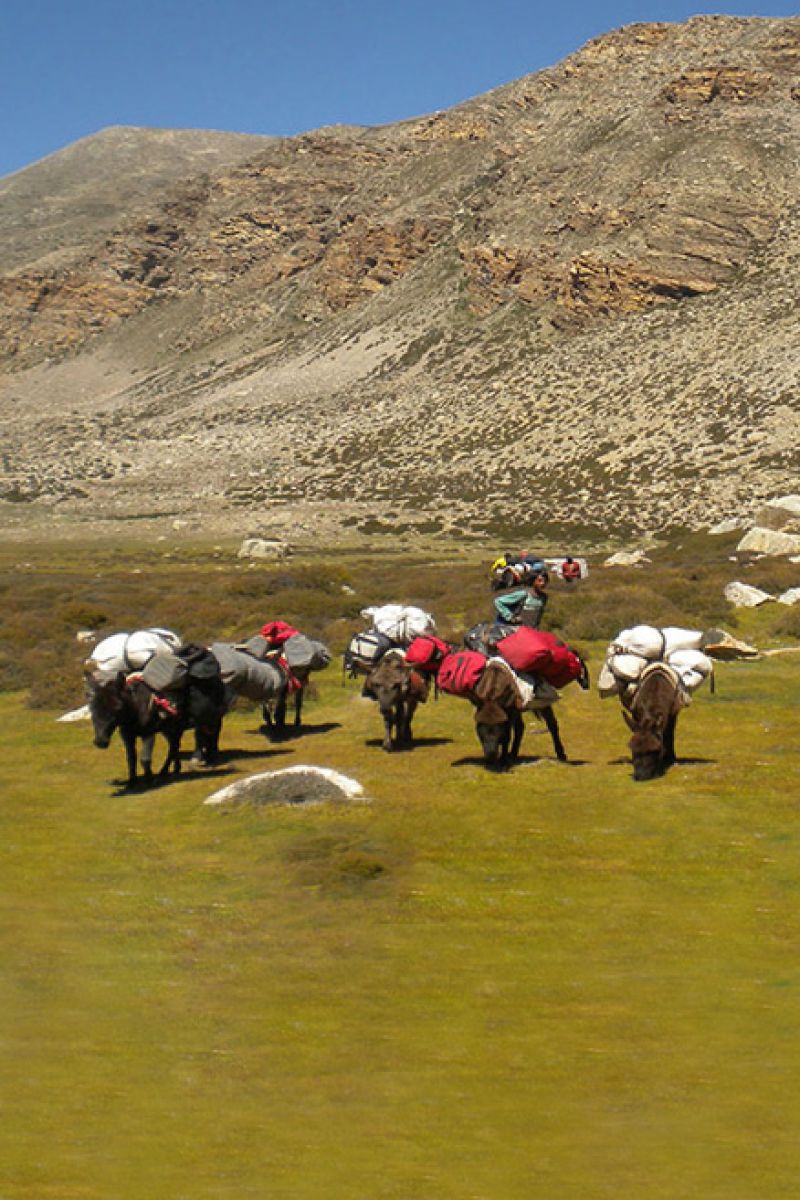- Travel Styles
- Destinations
- Signature & Charity Treks
- Special Project
- About Us
- Contact Us
19 days
18 Nights
Mustang Lo-Manthang
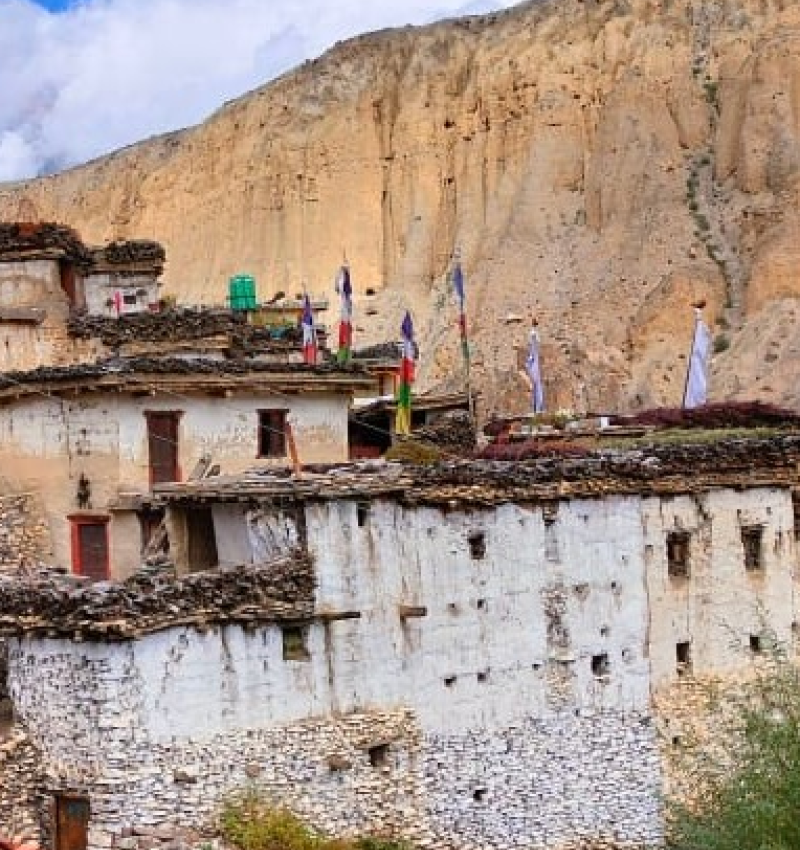

OVERVIEW
Nepal: peaks, ancient sites, diverse landscapes.
Eight of the world’s tallest mountains and the world’s oldest Hindu and Buddhist pilgrimage sites are located in Nepal. Nepal offers unparalleled adventure options with abundance in flora and fauna.
Although modernization has set in, the essence of ancient Nepal – warm hospitality still remains in heart of every Nepalese.
Mustang is located in the heartland of Nepal, alongside the border with Tibet. During the trek, you can witness rugged barren mountains, deep canyons, eroded cliffs and Moraine valleys, snow-capped peaks and more.
Trip Overview
Destination
Region:
Activity:
Max. Altitude:
Type:
Group size:
Difficulty:
Highlights
- Visit UNESCO World Heritage Sites in Kathmandu.
- Visit Muktinath temple – a sacred pilgrim site for both Hindu and Buddhist
- Visit Kali Gandaki Valley – the world’s deepest river gorge
ITINERARY
TAILORED TRIP FOR YOU
Arrival in Kathmandu (1350m)
Depending on your arrival time, our representative will be at the airport to receive you and transfer you to your booked hotel.
Evening dinner at the Hotel
Meals: D
Kathmandu: Sightseeing and Trek Preparation
Today after the breakfast we’ll be touring around the Kathmandu valley. The Durbar Square, Swoyambhunath Stupa, Pashupatinath temple and Boudhanath Stupa are the major sight-seeing areas around the Kathmandu valley. These all are listed in a world heritage sites. The Durbar square shows us the real life of ancient periods. Pashupatinath temple is one of the most sacred Hindu pilgrimages. Swoyambhunath temple and Boudhanath stupa is the Buddhist temple which is very popular around the globe. Swoyambhunath is also known as money temple stands on the hilltop west of the Kathmandu valley. It can also be known as the viewpoint of Kathmandu valley. Boudhanath temple is the biggest Chorten ever made around the world.
Later on, after the sight-seeing, we will introduce to our fellow participants and discuss our trip preparations.
Meals: B
Fly to Pokhara
Today we will fly to Pokhara; a short scenic 25 minutes flight. On arrival at Pokhara airport, we are transferred to Hotel.
Remaining afternoon at leisure or stroll around Lakeside.
Meals: B
Pokhara – Jomsom (2700m)
We wake up early because the Jomsom flights start early in the morning, depending upon the weather conditions. At Jomsom, we have to register nearby the local authorities for our trip to the Mustang.
Meals: BLD
Jomsom – Kagbeni (2800m) – 3 Hrs walk
It takes about 3.5 hrs walk to reach Kagbeni from Jomsom. On reaching the Kagbeni Village, we will complete our paperwork at police check post before entering this long-forbidden region of Nepal.
Meals: BLD
Kagbeni – Chhuksang (2950m) – 4/5 Hrs walk
This morning we pass the Kagbeni “restricted area” board and enter the Mustang. After about 3 hours of walk, we will reach Tangbe, a small village which is a labyrinth of narrow alleys, fields of buckwheat and barley and apple orchards with the view of Nilgiri Peak on the back. We trek further towards Chuksang where we camp for tonight.
Meals: BLD
Trek to Samar (3540m) – 4/5 Hrs walk
We follow the Kali Gandaki River which is now called the Mustang Khola until we cross a bridge way up to Chele. The village is clean, very inward looking and perched on a place which allows the checking of all the valley movements. We can feel the change of ethnic groups and customs as we pass by the village. The trail then goes up on a small plateau, closed by a surprising bottleneck of stone penitents. View of Gyagar, a wall-surrounded village. As we move through the rocky steps and steep staircase, the trail overlooks the gorge. As we arrive at the first pass at around 3530m, we get the glimpse of Damodar Himal. From here we descend to Samar, a typical village with poplars, a good irrigation system, and friendly people.
Meals: BLD
Trek to Geling (3520m)
Today we will notice the two trails leading to Geling, the simplest one on the hillside which takes about 4 hours and the other one follows the “pilgrims trail” and takes more time which we will take it. Starting with the steep drop into a canyon will lead a holy cave fervently venerated by the inhabitants (especially a chorten shaped stalactite). From here we ascend to another spectacular canyon till Shyangmochen (3700m) where we rejoin the main trail. After crossing another short pass (3860m), we descend towards Geling (3520m).
Meals: BLD
Trek to Tramar (3800m) – 5/6 Hrs walk
In the morning we will visit the Geling monastery. According to Peissel, Geling is considered as “the Mustang gate”. Way up to a pass at around 4395m. We descend to Gemi hamlet which is another great place where we have a lunch in a village house. After lunch, we take a steep trail overlooking Tramar.
Meals: BLD
Tramar – Lo Gekar – Tsarang (3580m) – 7/8 Hrs walk
A steep ascent to the Lo Gekar monastery. A visit of that XIth century ancient monastery. The trail goes on more easily till the Tsarang village, where we camp. The Village overlooks monastery where we will be visiting. The village has some remarkable points including the big chorten at the beginning way from Gemi.
Meals: BLD
Trek to Lo Manthang (3750m) – 4 Hrs walk
On the way out of Tsarang, we pass nearby a turbine which provides electricity to the village. Several mills work on that torrent and a big Chorten marks the way out of the village. We will notice many troglodytes’ settlements are towering us. A dry valley, which progressively becomes greener, leads us to a pass where prayer flags are flapping at 3870m as we overlook the Lo Manthang valley. We walk further arriving below the Mustang capital walls. The place has two gates: the main one on the north, the second one, unobtrusive and discreet, on the south.
Meals: BLD
Lo Manthang and Around
Generally, the King honors us with his presence if we request an audience. We will pay homage to him while drinking a salt and butter tea. There are numeral hikes around Lo Manthang, amidst barley, mustard and buckwheat fields. We can also enjoy walking along the narrow streets of that ancient town and watching the people having a chat on the Royal Palace square. The centuries-old monasteries also have very nice paintings.
Meals: BLD
Trek to Dhie (3360m) – 4 Hrs walk
We again cross the pass over Lo Manthang then we move towards the left. The trail goes upstream a valley next to the Mustang Khola. We will come across some tricky sections to cross, then a short pass, steep at the end, crossing before descending amidst fairy chimneys. On the way out we overlook Dhie. The drop, still steep, ends in a lunar atmosphere.
Meals: BLD
Trek to Tange (3320m) – 6 Hrs walk
At first, the trail descends to the Ghechang Khola at around 3350M, then again goes up till 3800m before we descend again! We will camp near Tange and also visit the remote village with a remarkable architecture, especially its wonderful Chorten line.
Meals: BLD
Trek to Tetang (3050m) – 7 Hrs walk
It’s a long day today because as we encounter many switchbacks! Firstly, horizontal trails till the torrent which steeply rises to 4100m. Another about 3 hours of walk and we descend to Tange. We will camp here the titanic atmosphere.
Meals: BLD
Trek to Muktinath (3650m) – 6 Hrs walk
We go through an easy 3 to 4 hours ascend that brings us to Muktinath. We leave mustang after this pass and arrive at Muktinath.
Meals: BLD
Trek Tojomsom – 5 Hrs Walk.
Today we leave Muktinath and descend down to Jharkot village where we visit the ancient Shakyamuni Buddhist Monastery and Traditional Medical Center and then to Ekalbhatte and to Jomsom. We will camp here for the last night with our staff.
Meals: BLD
Fly to Kathmandu via Pokhara
We take an early morning spectacular flight from Jomsom to Pokhara and catch a connecting flight back to Kathmandu.
Meals: B
International Departure
Depending on your flight time you will be transferred to the airport. The airport check-in is 3 hours prior to the departure time and the hotel checkout time is 12 PM.
Our representative will meet you at the hotel and transfer you to the airport.
Meals: B
Included
- 3 nights in Kathmandu Hotel as per program on Bed & Breakfast basis
- 2 night in Pokhara Hotel as per program on Bed & Breakfast basis
- 13 nights camping as per program on Full Board
- Flight: Kathmandu-Pokhara-Jomsom-Pokhara-Kathmandu
- All camping and kitchen equipments and meals during the trek
- National Park Fees & TIMS Permit Fee
- 1 full day sightseeing in Kathmandu with english speaking guide
- 1 English Speaking Guide (from Kathmandu)
- 1 porter for every 2 members
- All staffs insurance & daily wages
- All Airport transfers
Not Included
- Lunch & Dinner in Kathmandu
- Personal Equipment & Insurance
- Personal Expenses (Battery recharge on local lodge, laundry, telephone, etc)
- Nepal Visa fee US $40 per person
- Emergency Evacuation if required
- Other personal Expenses
- Tips for Staffs
ACCOMMODATIONS
WHERE YOU WILL STAY
This tour spends three nights in a hotel in Kathmandu, two nights in Pokhara and thirteen nights on the trek in tents on sharing basis.
In Kathmandu, we normally use a 3-star hotel, located within walking distance of the Thamel and in Pokhara we use a 3 star hotel which is located near Lake side.
On the trek, we will stay in two men tents with our kitchen staff preparing the meals including breakfast, lunch and dinner. During long day walks, we might have to prepare packed lunch in the morning and carry with us.
FAQs
ESSENTIAL INFO
adventure that speaks to your heart.
Most nationalities require a visa for Nepal, which can be obtained in advance or on entry. If you wish to apply before departure the current visa cost is £20 for a 15 day visa and £35 for a 30 day visa for UK passport holders. The current cost of a visa on arrival is US $25 for 15 days, US $40 for 30 days or if extending your stay $100 for 90 days. All are multiple entry. The visa on arrival fee can be paid for in cash in US Dollars, Pounds Sterling or Euros. You will also need a passport photo. Application forms are available in the immigration hall (or for electronic passports there are visa registration machines which, after inserting your passport, automatically fill out a form for you). You must firstly join the queue to pay the visa fee, and then go to the relevant immigration desk to obtain your 15, 30 or 90 day visa stamp. There can be long queues for visas on arrival.
Non UK nationals should check requirements with their nearest embassy (a few nationalities are not permitted visas on arrival).
There are no mandatory vaccination requirements. Recommended vaccinations are: Polio, Tetanus, Diphtheria, Typhoid, Hepatitis A. The risk of malaria is present in certain regions only (such as Chitwan); you may wish to consult your GP or travel health clinic for further advice. Dengue fever is a known risk in places visited. It is a tropical viral disease spread by daytime biting mosquitoes. There is currently no vaccine or prophylaxis available for Dengue, and therefore the best form of prevention is to avoid being bitten. We recommend you take the usual precautions to avoid mosquito bites. Most of our trips to Nepal go to high altitudes where there is a risk of being affected by Acute Mountain Sickness. Our itineraries are designed to enable everyone to acclimatise to these altitudes, but you should be aware that it is still possible for you to be affected. Please refer to the TRIP NOTES for complete advice on AMS.
Breakfast is included throughout the trip and all meals are provided while camping (all breakfasts, 3 lunches and 2 dinners).
Breakfast is included throughout the trip and all meals are provided while camping. On trek the breakfast will be a set menu usually consisting of porridge and toast. Any additional items that are not included in the set menu should be ordered and paid for separately. We do not include lunch and dinner in the tea-houses, allowing you to choose what you want to eat and when. Although most lodges have almost identical menus, they are reasonably extensive and offer a varied selection, ranging from traditional Nepalese dal bhat to pizza and apple pie.
Although meat is available in the tea houses, we advise against eating it on trek. The meat has often been carried in the heat from lower altitudes for several days before reaching the lodges, and can cause stomach upsets or illness. Germs can also be spread by handling dirty money – we recommend using hand sanitiser.
If you buy imported food and drink whilst on trek you will spend more than the suggested amount.
Drinking Water
Staying hydrated is important when undertaking any physical activity but particularly so at altitude where it is generally recommended to drink at least 3-4 litres per person per day.
We strongly encourage you not to buy bottled water on trek as this contributes to the growing problem of plastic pollution in Nepal’s trekking areas.
All tea houses will provide cold water free of charge, if requested. Although this should not be drunk untreated, we recommend that you bring a reusable bottle with a wide opening (Nalgene or similar) with you and use a SteriPEN to treat it with. A SteriPEN is a handheld UV water purifier – small, lightweight and battery powered so easy to pack for a trek. In Nepal’s trekking regions most of the bottled water isn’t strictly ‘mineral water’ anyway but is UV treated, so it’s exactly the same technology. It’s quick to use, far more effective than purification tablets, and the water is ready immediately. It’s fine to use a SteriPEN on non-boiled water so long as it isn’t cloudy or full of sediment (which is uncommon in these regions).
SteriPENs are widely stocked on Amazon, outdoor shops and other online retailers; look for the latest models but avoid USB charging ones. Better still, a SteriPEN will pay for itself over the course of the trek and you won’t leave behind a single plastic bottle – you will end up spending the same or even less than you would on bottled water, plus you can keep it for future trips.
If you prefer not to invest in a SteriPEN, the tea houses also sell boiled water for approx. Rs150-300 per litre (the price increases the higher you trek) which should not require treating. This is also perfect for a bedtime refill as it can double up as a hot water bottle.
While camping boiled water is supplied for drinking.
The main trekking season in Nepal is from October to mid-May when daytime temperatures at most altitudes are generally comfortable for walking, the sky is clear much of the time and rain and snow are occasional occurrences. Daytime temperatures will vary from 15ºC to 35ºC in the Kathmandu Valley to around 10ºC at 3,600m and progressively lower the higher we go.
Different seasons offer different advantages for trekking.
Post Monsoon/autumn: Mid-September to November. This is the main trekking season in Nepal. Day temperatures in Kathmandu are approximately above 20ºC. Skies are usually clear and days on trek are sunny and mild with clear mountain views. At the highest altitudes although the days can be nice and sunny the temperatures can drop to 10ºC and much lower. Nights will be colder with temperatures dropping as low as minus 10ºC and lower at the highest altitudes.
Pre-monsoon/spring: March to May. Both day and night temperatures will be warmer in general but haze will often build up in the afternoons. It is very hot in the lowlands and temperatures rise to 35ºC in Kathmandu. Flowers bloom in this season and this is one of the reasons people chose to trek in spring.
Snow can be expected on any departure, usually at the higher altitudes. Summit day will be a very early start (usually about 2am) and will be extremely cold. Although mostly it is calm and clear on summit day the mountain does occasionally get high winds. You need to be equipped for temperatures as low as minus 25ºC plus wind chill on summit day.
Please remember that in any mountain area the weather is never wholly predictable and you should be prepared and equipped to deal with any differences in weather beyond the conditions described above.
This is a Tough+ trek. It is activity level 9 with 16 days walking and full porterage throughout. The maximum altitude is 6,189m (or 5,545m without Island Peak) and the average is 3,680m. There are some steep ascents and descents and some narrow trails. As this trek also ascends to very high altitudes participants should be confident of their physical fitness and must have previous experience of trekking at altitude and in snow.
Although it is not compulsory to participate in the climb (the summit attempt is optional), anyone who does must have previous ice axe and crampon experience and know how to use a jumar and abseil device. There will be equipment checks and practice sessions for rope use, ice axe, crampon and harness use, abseiling and crevasse rescue. For safety reasons it is compulsory to participate in these sessions. If you do not take part the leader and climbing Sherpas will not allow you to take part in the climb.
Though technically harder than Mera Peak, for those with the necessary experience this expedition is within the reach of those seeking their first Himalayan summit. The climb requires strong lungs and a great deal of will power – it is graded alpine PD+ and starts with some rocky scrambling to a glacier. We cross the glacier roped up (there is one ladder to cross), and then come to a 200m steep 40-45 degree headwall, which leads to a 20m summit ridge. We will rope up to cross the glacier and you will be walking with an ice axe, crampons and plastic boots. There are fixed ropes up the headwall (approximately 200m) and along the summit ridge. On the ascent you will need to use a jumar and on the descent you will need to use an abseil device.
Please be aware that altitude can have a significant affect on your physical state. It is important that you take heed of the leader’s advice and decisions at all times. The leaders are trained in first aid and are well aware of AMS symptoms and will keep a close eye on the group. We ask you to refer to the altitude warning within the Trip Notes.
The climb itself is not recommended for anyone with a fear of heights or vertigo and the main trail itself crosses three modern suspension bridges over rivers and valleys – all of these have mesh sides but some are quite long and high.
ESSENTIALS
EQUIPMENT CHECKLIST
Ensure you have all the essentials to make your trip
safe and enjoyable.
Body Wear
- Gore Tex Jacket
- Gore Tex Pant
- Hiking pant
- Fleece trouser and jacket or warm jumper – Recommended not thick but warm enough that fits inside the Gore Tex pant
- Anti-sweat T-shirtEarmuffs/Ear warmers (optional)
- Thermal inner trouser
- Down jacket with hoodie
- Thermal inner trouser
- Down jacket with hoodie
Head Wear
- Sun Hat/Normal cap
- Fleece or woolen hat
- Earmuffs/Ear warmers (optional)
- Sunglasses with UV protection
- Buff Scarf / thin face mask
Hand wear
- Fleece or woolen thin gloves
- Expedition shell gloves
- Gore Tex mitten gloves
Other Equipments
- Sleeping bag (comfort rated – 15ºC)
- 30 Litre Rucksack with cover
- Large size Duffel Bag with padlock
- Headlamp with spare batteries
- Water bottles 1 Litre X 2
- Thermos
- Basic First Aid Kit including: antiseptic cream, throat lozenges, diarrhea treatment (Imodium), altitude (Diamox), painkillers, plasters and blister treatment, insect repellent, and re-hydration salts (Dioralite). Glucose tablets and multi-vitamin tablets are also a good idea.
Washing kit & Toiletries
- Waterproof washing kit bag
- Towel – medium size
- Washing soap, towel, tooth pest, tooth brush etc.
- Sun Lotion Enough +30SPF (including total bloc for lips, nose etc.)
- Hand wash & sanitizer
- Toilet paper (you can buy this in the lodges)
- Wet tissue
Foot Wear
- Trekking boots
- Hollow Out Outdoor Slipper
- Trekking socks (4-5 pair)
- Snow Gaiter
Optional Items
- Trekking poles
- Trainers or similar for use in the lodges
- Shorts
- Base layer leggings
- Gaiter
- Sleeping bag liner
- Pillowcase
- Ear plugs (particularly if you are not the one snoring)
- Travel clothes
- Camera
- Pen-knife (remember to pack sharp objects in hold baggage)
- Repair kit – (egg. needle, thread, duct tape)
“Six out of Six”
Yeti Mountain Home Thame was the third of six Yeti Mountain Homes we stayed in. Loved the ambiance. Loved the village. A huge bedroom. Once again – brilliant food and warm welcoming staff. The decor was stunning and the house arrangement interesting.
LOIS OMAN

“Six out of Six”
Yeti Mountain Home Thame was the third of six Yeti Mountain Homes we stayed in. Loved the ambiance. Loved the village. A huge bedroom. Once again – brilliant food and warm welcoming staff. The decor was stunning and the house arrangement interesting.
LOIS OMAN

“Six out of Six”
Yeti Mountain Home Thame was the third of six Yeti Mountain Homes we stayed in. Loved the ambiance. Loved the village. A huge bedroom. Once again – brilliant food and warm welcoming staff. The decor was stunning and the house arrangement interesting.
LOIS OMAN

FEATURED JOURNEYS
ALSO SEE THESE TRIPS
We have handpicked some of our favourite iconic Nepal trips we think you will love.
ENQUIRY
CONTACT OUR TRAVEL EXPERTS
within 24 hours.
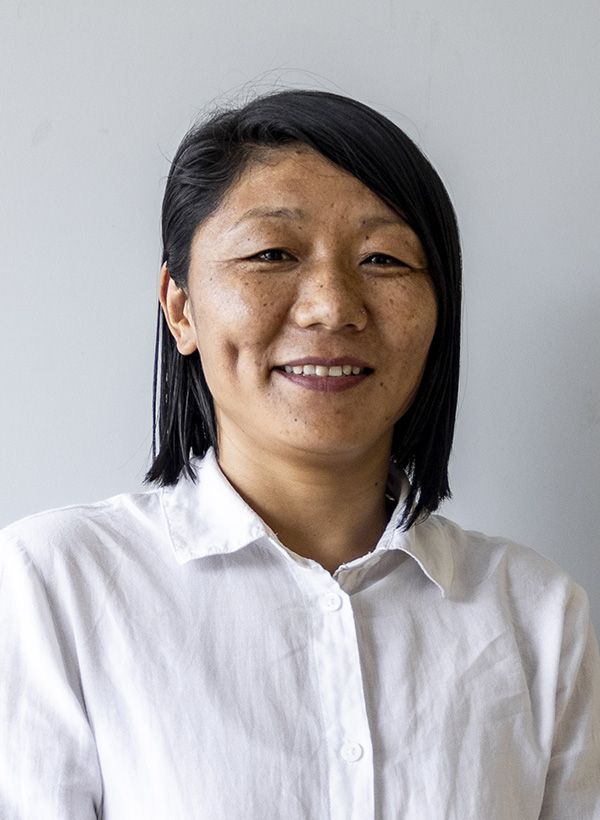
NIRMALA GURUNG 
+977 9801223978
nirmala@thamserku.com
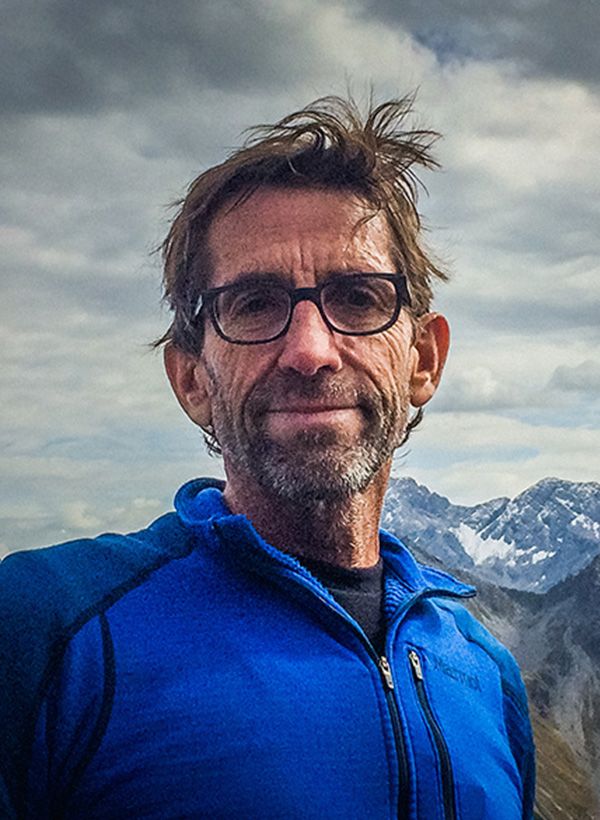
MICHAEL SCHOTT 


+49 174 9755492
m-schott@neumann-grafik.de
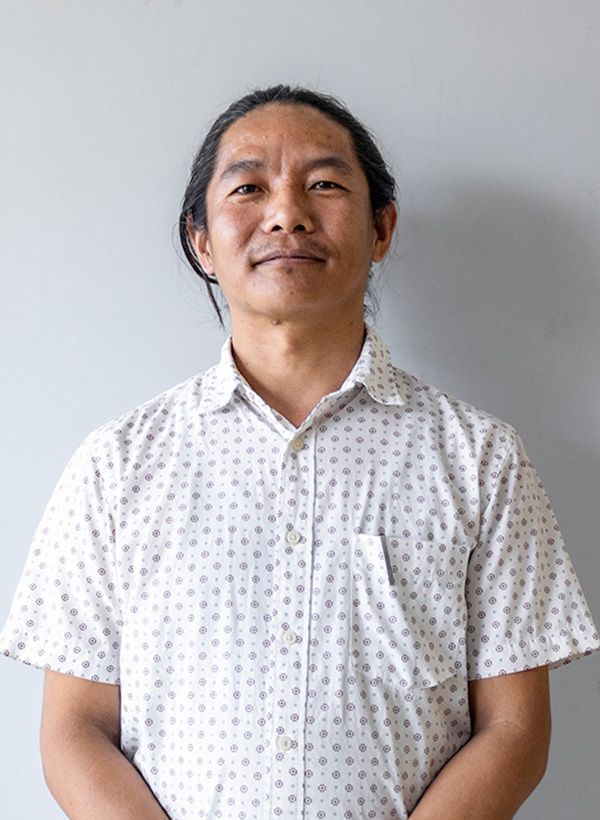
KUMAR RAI 
+977-9801236280
kumar@thamserkutrekking.com
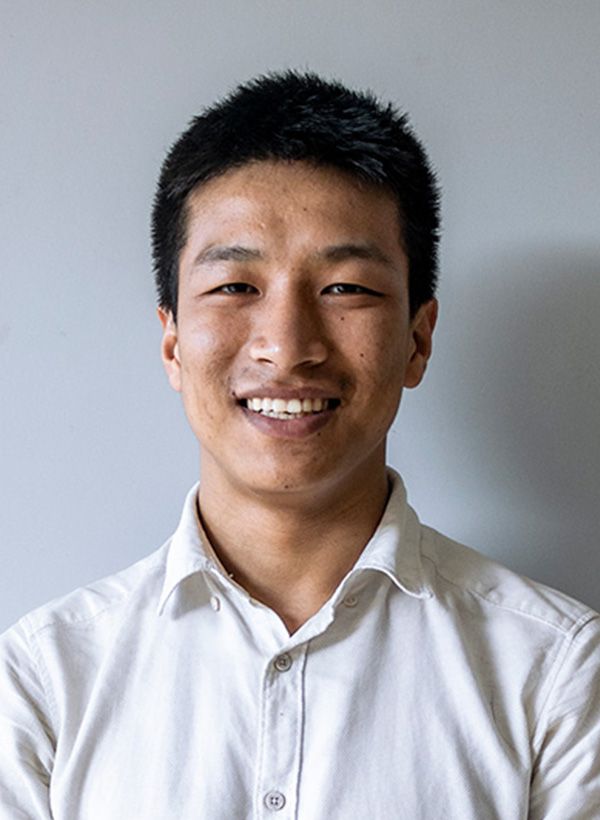
NIMTE SHERPA 
+977-9801223977
info@thamserkutrekking.com
BOOK YOUR TRIP BOOK YOUR TRIP BOOK YOUR TRIP BOOK YOUR TRIP BOOK YOUR TRIP BOOK YOUR TRIP BOOK YOUR TRIP BOOK YOUR TRIP BOOK YOUR TRIP BOOK YOUR TRIP BOOK YOUR TRIP BOOK YOUR TRIP BOOK YOUR TRIP BOOK YOUR TRIP BOOK YOUR TRIP BOOK YOUR TRIP BOOK YOUR TRIP BOOK YOUR TRIP BOOK YOUR TRIP BOOK YOUR TRIP BOOK YOUR TRIP BOOK YOUR TRIP BOOK YOUR TRIP BOOK YOUR TRIP BOOK YOUR TRIP BOOK YOUR TRIP BOOK YOUR TRIP BOOK YOUR TRIP BOOK YOUR TRIP BOOK YOUR TRIP BOOK YOUR TRIP BOOK YOUR TRIP BOOK YOUR TRIP BOOK YOUR TRIP BOOK YOUR TRIP BOOK YOUR TRIP BOOK YOUR TRIP BOOK YOUR TRIP BOOK YOUR TRIP BOOK YOUR TRIP BOOK YOUR TRIP BOOK YOUR TRIP
